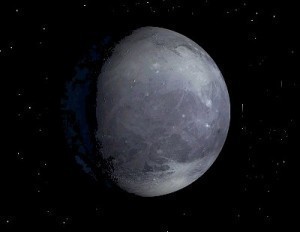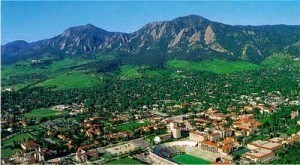What is the Size of Pluto?
The size of Pluto, diameter wise, is 2,390 km or about 70%  equal to the Moon. The mass is estimated to be less than.0.24% that of Earth.
equal to the Moon. The mass is estimated to be less than.0.24% that of Earth.
Physical Attributes
Although it is very distant, scientists have established several facts about Pluto. The surface area is 1.665 × 107 sq km (equal to about 0.033 Earths). The volume has been computed to be 6.39 × 109 km3 and the equatorial surface gravity to be 0.658 m/s sq.
The most recent estimates put the escape velocity at 1.229 km/s and the sidereal rotation at −6.387 230 day. While measuring the size of Pluto, scientists discovered the equatorial rotation velocity is 47.18 km/h. The magnitude is 13.65 and has an angular diameter of 0.065 degrees.
Orbital Figures
The aphelion of Pluto is 7,375,927,931 km or 49.305 032 87 AU. The perihelion is 4,436,824,613 km (29.658 340 67 AU). Pluto’s semi major axis is 5,906,376,272 km (equivalent to 39.481 686 77 AU).
The orbital period is 248.09 years or 90,613.305 days. The synodic period is 366.73 days and the orbital speed is 4.666 km/s. The inclination is 17.141 75 degrees. The orbit of Pluto means there are times it is nearer to Uranus than Neptune.
Dwarf Planet
In 2006 Pluto was removed of its designation as the 9th planet of the Solar System. The size of Pluto was one of the major factors that led to its classification of being a dwarf planet. Today it is recognized as one of the biggest dwarf planets. Pluto’s origin is still a matter of debate.
Composition and Structure
Scientists believe that Pluto is comprised of rock and ice, with rock making up 70% of it. Based on this theory, the radioactive minerals would decay. This would lead to heating of the ice. The consensus is that the dense core is enveloped by ice.
Based on this supposition, the core would be 1,700 km. Using this measurement, this would be 70% of the planet’s diameter. There are also theories a layer of liquid water exists 180 km below the mantle.
Most of the information about the size of Pluto came about with the discovery of Charon, one of its satellites. Compared with other planets, Pluto is much smaller (0.2 lunar masses).
It is less massive than the Moon and other satellites including Io, Ganymede, Europa and Triton. However Pluto’s diameter is double that of Ceres. Compared with Ceres its mass is 12 times more. But Pluto is smaller than Eris, another dwarf planet.
Pluto’s Atmosphere
Current studies show the atmosphere is comprised of carbon monoxide, methane and nitrogen. It is thought these elements were derived from the ice on the planet itself.
The climate varies depending on its distance from the Sun. When the planet is near the Sun, the temperature goes up and vice versa. Recent estimates put the temperature at -320 C.
Although the size of Pluto is now known, a lot more remains to be discovered. There are several planned explorations, so other facts about this dwarf planet will be learned in the coming years.





